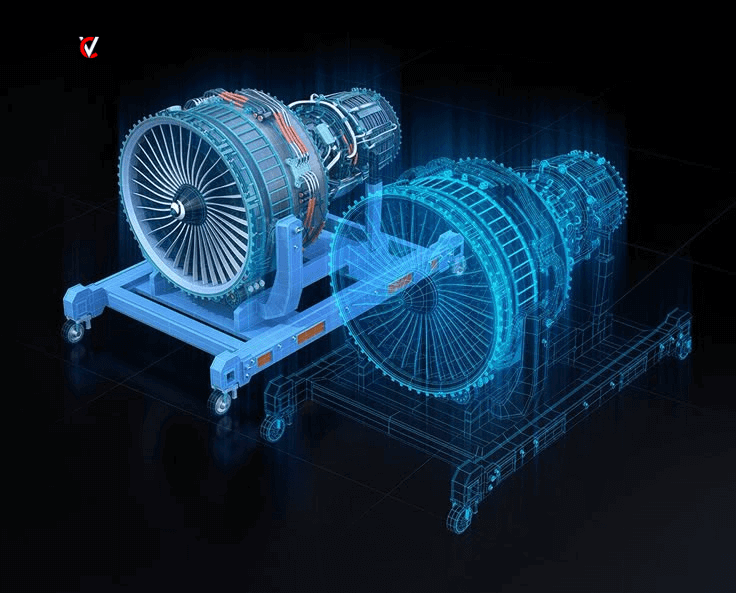Technology is not merely evolving it’s accelerating, converging, and transforming every layer of business, society, and governance. From how data is processed to how we experience reality, emerging technologies are creating profound shifts in capability, connectivity, and consciousness. As industries adopt these transformative tools, leaders must understand not only their potential but also their implications. Here’s a deeper look at seven critical emerging technologies reshaping the future.
Generative AI
Generative AI has moved beyond being a content creation novelty. It now functions as a strategic co-pilot in organizations, enabling innovation in product design, business intelligence, and human-computer interaction. It can generate marketing campaigns, synthesize research, simulate scenarios, and even assist in software development. Businesses are integrating generative models into CRM systems, R&D pipelines, and decision-support systems, unlocking speed and scale previously unimaginable.
However, the deployment of generative AI also demands robust governance. Deepfakes, misinformation, and AI hallucinations pose new risks. Intellectual property laws are being tested, and ethical frameworks must evolve to ensure transparency, accountability, and fairness. The challenge isn’t just technological it’s philosophical.
Edge Computing
Edge computing brings data processing closer to the source whether it’s a manufacturing plant, autonomous vehicle, or medical device. This reduces the latency involved in sending data to a centralized cloud and back. In mission-critical applications, such as emergency response or autonomous navigation, milliseconds can determine outcomes. By decentralizing computation, edge computing increases system reliability and data sovereignty.
Businesses are also leveraging edge to enable real-time analytics, AI inference, and localized decision-making without depending on constant connectivity. It supports resilient architectures in remote areas, enhances cybersecurity by minimizing exposure, and reduces cloud traffic, making it both a performance and cost strategy.
5G and Advanced Connectivity
5G is not just about speed it’s about unlocking a new digital fabric. With ultra-low latency, massive device density, and enhanced mobile broadband, 5G underpins the growth of the Internet of Things (IoT), autonomous systems, and immersive applications. It enables real-time machine communication in factories, instantaneous remote control in healthcare, and interactive XR in entertainment and education.
As 5G networks expand globally, industries are rethinking how services are delivered. New business models like connected-as-a-service are emerging, and cross-sector innovation is gaining momentum. However, this also increases reliance on telecom infrastructure and demands rigorous investment in cybersecurity and cross-border data management.
Cybersecurity Mesh
Traditional, perimeter-based security models no longer suffice in a world of cloud computing, remote work, and API-driven systems. Cybersecurity mesh architecture (CSMA) is an emerging framework that enables modular, flexible, and scalable protection across distributed environments. It treats identity and context as the core of security, allowing enterprises to apply consistent policies regardless of location or device.
This shift is crucial as cyberattacks grow more sophisticated, targeting supply chains, critical infrastructure, and digital identities. Cybersecurity mesh combines zero-trust principles, AI threat detection, behavioral analysis, and dynamic access controls. It’s not just about defense it’s about designing systems to be adaptive, resilient, and recoverable.

Digital Twins
A digital twin is a real-time, data-driven replica of a physical entity be it a machine, building, or entire city. These twins allow companies to simulate operations, predict failures, optimize performance, and test scenarios without real-world risk. In industries like aerospace, energy, and urban planning, digital twins are transforming design, maintenance, and decision-making.
By connecting IoT sensors with AI and cloud computing, digital twins become powerful tools for sustainability, safety, and efficiency. They also enable predictive maintenance, reducing downtime and operational costs. As the metaverse matures, digital twins will serve as foundational elements of virtual environments, combining spatial intelligence with real-time analytics.
Green Technology
Green technology, or “climate tech,” is essential to combating environmental degradation and achieving net-zero goals. It encompasses clean energy innovations (solar, wind, green hydrogen), energy storage systems (solid-state batteries, grid-scale storage), and carbon capture solutions. Innovations in circular economy models, biodegradable materials, and low-emission industrial processes are also gaining traction.
Businesses are adopting green tech not only to reduce emissions but to meet investor expectations, align with regulatory mandates, and future-proof their operations. The convergence of AI with green tech is driving smarter resource optimization, real-time emissions monitoring, and predictive environmental modeling. Sustainability is no longer an add-on it’s a growth engine and competitive differentiator.
Extended Reality (XR)
Extended Reality which includes Virtual Reality (VR), Augmented Reality (AR), and Mixed Reality (MR) is revolutionizing how people interact with digital content. XR is increasingly used for immersive learning, virtual collaboration, mental health therapy, and digital showrooms. It’s blurring the line between physical and digital environments, creating new forms of engagement and expression.
XR’s enterprise applications are expanding. It enables virtual prototyping, hazard-free training, remote field support, and interactive customer experiences. As devices become lighter and more affordable, XR will move beyond niche applications and become a central part of how we work, communicate, and learn in hybrid environments.
Workforce Transformation and the Skills Imperative
The pace of technological innovation is outstripping traditional workforce development systems. As AI, robotics, and intelligent automation become mainstream, many existing job roles are being redefined or rendered obsolete. Yet, this disruption is also creating a vast demand for new skill sets, especially those rooted in cognitive agility, interdisciplinary thinking, and human-technology collaboration.
Key skill areas such as data literacy, digital ethics, design thinking, and systems integration are emerging as foundational. Soft skills like empathy, leadership, and adaptive communication are also gaining prominence, as human interaction remains irreplaceable. To address the widening skills gap, enterprises must implement agile learning ecosystems microlearning platforms, peer-to-peer academies, and certification pathways driven by business needs.
Moreover, organizations must prioritize inclusive upskilling programs, ensuring that workers across geographies, ages, and backgrounds can transition into future-ready roles. Psychological safety, mental health support, and workload management also need to be baked into transformation strategies, as employees face continuous adaptation stress.
The Geopolitics of Technology
Technology is no longer a neutral tool it is a strategic asset shaping global power dynamics. The race for supremacy in AI, semiconductor fabrication, satellite internet, and quantum computing is prompting national investments, trade restrictions, and alliances. Countries are increasingly focused on achieving technological sovereignty reducing dependency on foreign tech and securing critical supply chains.
This geopolitical tech race is influencing international relations, as seen in chip bans, AI export controls, and bifurcation of internet governance. Technology is now a proxy battlefield where cyberattacks, misinformation campaigns, and surveillance capabilities are being deployed for influence and control.
Multilateral cooperation has become essential. Without harmonized regulations on AI ethics, cybersecurity standards, and cross-border data transfer, we risk a fragmented digital future with conflicting systems. The tech industry must participate in diplomacy, ethical diplomacy, and global policy-making to ensure that innovation remains a force for collective progress.
Ethical and Philosophical Dilemmas
As machines begin to think, decide, and act, they inherit our moral burdens. Algorithms now make judgments in areas once reserved for humans loan approvals, hiring, legal sentencing, and even military targeting. This raises existential questions: How do we program fairness? Who is held accountable for algorithmic harm? How do we preserve human agency in automated environments?
Ethical dilemmas are no longer theoretical they are operational. For example, training AI on biased data can perpetuate systemic inequality. Black-box models undermine transparency, and surveillance technologies challenge civil liberties. Ethical frameworks must evolve from reactive compliance to proactive design incorporating fairness, explainability, accountability, and value alignment from the earliest stages of product development.
Institutions should foster ethics review boards, create interdisciplinary collaboration between technologists and ethicists, and invest in AI literacy across the organization. Only through conscious design and transparent governance can we ensure that technological progress uplifts humanity, rather than marginalizing it.

Regulatory Evolution and Global Standards
With innovation accelerating beyond regulatory pace, governments are playing catch-up crafting new policies to manage the risks and responsibilities of emerging tech. Landmark efforts such as the EU’s AI Act, the Digital Markets Act, and various global data privacy laws signal a regulatory renaissance. These efforts aim to create legal clarity, foster trust, and ensure competitive fairness.
Regulation is also extending into environmental impact, algorithmic transparency, digital taxation, and synthetic content labeling. For businesses, this means adapting to a multi-jurisdictional regulatory landscape. Proactive compliance is no longer a checkbox it’s a competitive advantage.
Companies must integrate regulatory intelligence into strategic planning and engage in public policy dialogue to shape practical, future-proof frameworks. Standards bodies, like IEEE and ISO, will play pivotal roles in defining global protocols for AI, cybersecurity, IoT, and sustainability.
The Human-Technology Interface
The interface between humans and machines is becoming more fluid, contextual, and sensory. From keyboards and screens, we are progressing toward zero-interface environments voice-controlled assistants, gesture-based navigation, and even neural interfaces. The future of computing will be ambient, seamlessly integrated into our surroundings and experiences.
This evolution mandates a rethinking of UX and interaction design. Human-centricity must be at the core ensuring that technologies are accessible to people of all abilities, easy to learn, and emotionally intelligent. As digital environments become more immersive, ethical design also includes considerations like attention economy, digital addiction, and cognitive overload.
Companies must champion inclusive innovation, designing for neurodiversity, multilingual users, and low-literacy populations. The true test of a great interface is not how powerful it is, but how intuitively and responsibly it integrates into human life.

Capital Markets and Innovation Investment
The financial engine behind the tech revolution is undergoing its own transformation. Investment firms are reorienting strategies to prioritize long-term, mission-aligned innovation. Sectors like green tech, synthetic biology, deep learning, and space exploration are attracting capital not just for ROI, but for existential relevance.
Impact investing is rising as both institutional and retail investors demand accountability not just profits. ESG metrics, social impact scoring, and innovation resilience are becoming core components of investment evaluation. Startups with a clear ethical stance, inclusive leadership, and planet-positive goals are gaining preference among next-gen investors.
Furthermore, sovereign wealth funds and national innovation councils are directing capital into foundational tech ecosystems incubators, patent pools, open-source platforms to secure technological competitiveness at a macro level. This capital transformation will shape which innovations reach scale, and how inclusive that growth becomes.
Resilience Through Technological Redundancy
In an era of increasing uncertainty climate change, pandemics, geopolitical shocks resilience is emerging as the defining business capability. Organizations must move beyond efficiency and agility to embrace robustness the ability to absorb shocks and adapt rapidly without systemic collapse.
Redundancy in systems is no longer a cost burden; it’s a strategic necessity. This includes multi-cloud architectures, edge-distributed processing, backup networks, and contingency planning using AI simulations. Digital twins are now being used not just for performance optimization, but for scenario testing, disaster preparedness, and stress testing complex supply chains.
Resilience must also include cyber resilience, ensuring that systems can withstand prolonged attacks or outages. As business continuity becomes a board-level concern, CTOs and CIOs are redefining IT infrastructure not as a back-office function, but as a mission-critical enabler of operational endurance.
Tech as a Strategic Compass
Emerging technologies are reshaping the very foundations of how we live, work, and govern. They are not isolated innovations but part of a vast interconnected web that is redefining power, opportunity, and identity in the digital age. From ethics to economics, from infrastructure to intimacy, technology is now the lens through which the future unfolds.
For leaders, technology is no longer a vertical function it’s a horizontal strategy. Navigating this complexity requires foresight, ethics, and imagination. Those who lead with purpose, adapt with resilience, and innovate with conscience will not only thrive they will shape the contours of the 21st-century civilization.
Related Blogs: https://ciovisionaries.com/articles-press-release/

